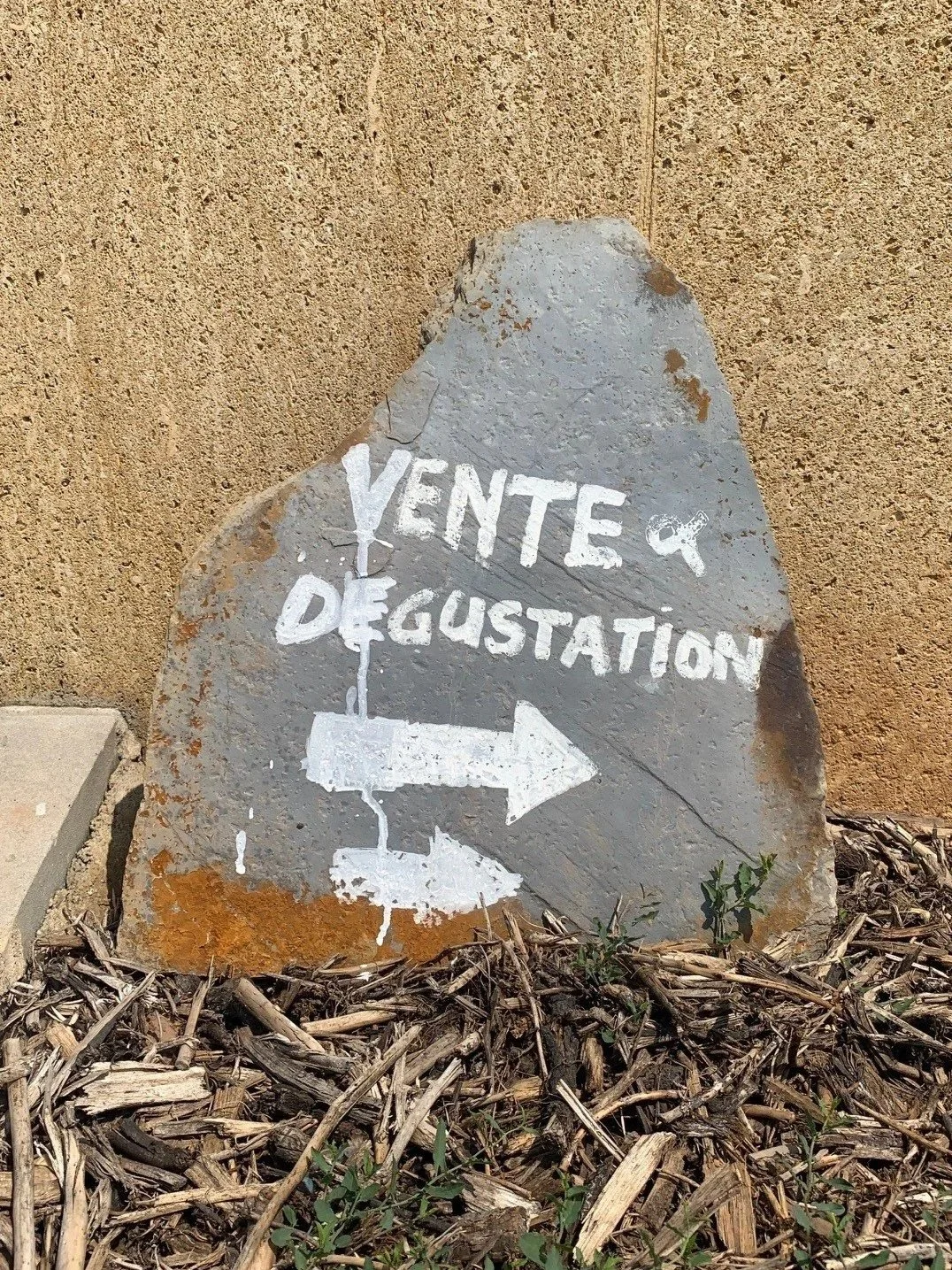Diary of a Shopkeeper, 19th October
Beatrice, Clos du Serres, Terrasses du Larzac.
We closed last Monday to carry out a stocktake. With the summer season over, and the busy festive season looming, it seemed a good point to check what wine we had on our shelves and in our stores. Do we have too little of one thing, or too much of something else? Have we enough choice as we head into the busiest time of the year, or do we need to go out and discover some exciting new treasures? Looking at figures on a computer screen tells you so much, but it’s always better to have a good old-fashioned look-see.
Sometimes we do stocktakes and keep the shop open, but it’s far easier if we’re not dashing between the counter and the shopfloor too often. (Apologies to anyone who came down last Monday!) Apart from anything else, counting inevitably leads to rearranging, and that means hauling hundreds of bottles off the shelves, lining them up on the floor, and replacing them in the same or a different spot, depending on what’s come to light. We wouldn’t want anyone sending the bottles flying as they went about their shopping.
What came to light this time is that we have a lot of relatively cheap bottles, around the £10/£11/£12 mark. I hadn’t realised how many of these we’d taken in over the past months, as they were all mixed up on the shelves with more expensive wines. We’ve now created a dedicated space to this price category, meaning they should be easier for browsers to find. On the other hand, if anyone is looking for an indulgent bottle for a big celebration or a special gift, they won’t have to look past loads of £9.99 Vinos Blancos de la Casa and £11.99 Vins Rouges Ordinaires to find them.
I don’t say this as an advertising pitch. After all, everyone knows that the cheapest wines are in the supermarkets that specialise in cheap goods of all sorts. But are they the best value? Now that’s a different question. A couple of days ago a customer I don’t remember seeing before, and who’d already bought two or three bits of excellent cheese, paused while I was carrying out a post-stocktake rearrangement of our Australian wines.
‘If you don’t mind,’ she said, ‘can I ask, why are your wines dearer than a supermarket’s?’
‘I don’t mind,’ I said, ‘It’s interesting.’ (Certainly more interesting than taking a bunch of bottles down, wiping the shelf, and putting the bottles back again six inches to the right.)
‘Start with volume,’ I went on. ‘Take Tesco, for example. They have 3,000 stores across the UK, and sell 300 million bottles of wine per year. ‘That’s not 300 bottles from a million different suppliers. It’s not even 30,000 bottles from 10,000 suppliers. They want to have roughly the same range in most of their stores, stocking say 100 bottles in smaller shops and 1,000 in bigger ones. That would add up to well over a million and a half bottles of a top selling wine.’
‘You don’t sell as many, I take it?’ she said.
‘A hundred and a half would be a best seller for us,’ I said, and put the £19.99 bottle of Dandelion Shiraz I’d been cradling back in its rightful place. I was getting in the swing now and didn’t want to gesticulate too excitedly with a bottle in my hand.
‘In terms of money making,’ I went on, ‘the supermarkets are in a class of their own. But it does bring restrictions too. They can only buy from really big wine producers, people who can make a million bottles a year without blinking. To do that, you need a winery the size of Flotta terminal. I’ve seen them in Australia: they’re amazing, winemaking on a truly industrial scale.’
‘Which keeps prices down, I suppose.’
‘Indeed. And the wine is clean, fruity, and consistent. But consider Dandelion Vineyards,’ I said, picking up the bottle I’d just set down. ‘They only produce a hundred thousand bottles a year. Far too few for a supermarket chain to work with. Or this one…’
I was getting excited again, and darted along to the French reds.
‘Los Maros, by Close du Serres. 10,000 bottles per year! That’s enough for a few dozen independent shops like us across Europe – and no more. They can never increase their output: their vineyards are tiny, the vines old and slow to grow. It’s produced by a husband-and-wife team, the winery’s attached to their house. It’s all handmade, characterful, and unique to them and their land.’
She looked at the price tag and raised an eyebrow.
‘Let me ask you a question,’ I said. ‘Why did you come to us to buy Extra Mature Orkney Cheddar, when you could have found their younger stuffer slightly cheaper elsewhere? And why did you ask us to cut you a slice of Papillon Organic Roquefort, when you could have bought something labelled Roquefort in a plastic package from a supermarket?’
‘Easy,’ she said. ‘It tastes better.’
‘Exactly,’ I said. ‘So have I persuaded you to spend a peedie bit more? Maybe our £12.99 as opposed to a supermarket £9.99?’
‘No,’ she said. ‘I don’t drink.’
This diary appeared in The Orcadian on 23rd October 2025. A new diary appears weekly. I post them in this blog a few days after each newspaper appearance, with added illustrations, and occasional small corrections or additions.





